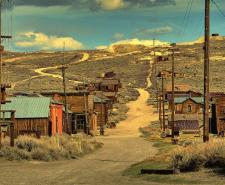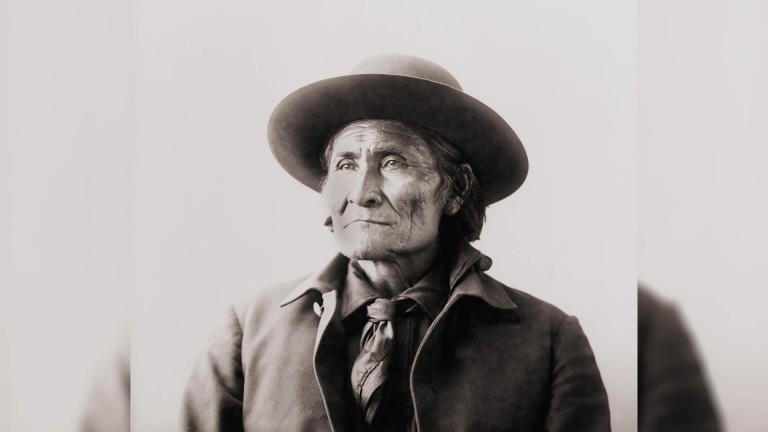
Read more about American History

As the United States expanded westward, the federal government strove to enforce its ideals on a not-entirely-receptive populace. So, the white settlers didn’t just want to take land. They also wanted this land’s existing occupants to increasingly adopt cultural practices customarily pursued by the white settlers themselves.
Christianity’s battle for religious hegemony across North America was like a microcosm of the wider conflict between the new arrivals and the indigenous tribes. Like that conflict, too, it was often a matter of ‘two steps forward, one step back’.
It is thought that Pocahontas converted to Christianity in the early 17th century. In sharp contrast, many later Native Americans would prove much more resistant to the spread of European religious influence. The new Sky HISTORY series Kevin Costner’s The West, starting Monday, 15th September, helps viewers to understand both why and how.
In the third episode of Kevin Costner’s The West, we hear about the plight of the married missionaries Marcus and Narcissa Whitman.
In 1836, the pair settled by the Columbia River in Oregon Country, with ambitions to Christianise the Cayuse Indians. At first, the Cayuse warmly welcomed the Whitmans, not least as Marcus was a medicine man.
In the event, the Whitmans made little headway in their conversion efforts. In fact, they baptised only two people in 11 years of living with the Cayuse.
Relations between the Whitmans and the Cayuse also took a dramatic turn for the worse after an outbreak of measles in the area. Marcus failed to cure infected Indians, who even suspected he had deliberately poisoned them.
On 29th November 1847, angry members of the Cayuse murdered the Whitmans in their own home.
In the 19th century, it was common practice for US forces to remove Indians from their original lands and shepherd them onto ‘reservations’. These were plots set aside as new habitats for the Indians.
Tribes had previously been able to sustain themselves with crucial resources provided by the high number of local buffalo. However, this number dwindled over time under the persistent gunfire of white settler hunters.
As a result, natives found themselves increasingly at the federal government’s mercy. This left them with no practical option but to accept the ‘offer’ of relocating to reservations. There, the US government supplied regular rations. Natives came to rely heavily on these provisions in the absence of sufficient buffalo.
As you can doubtless imagine, tribes did not react kindly to losing territory. However, this subjugation inevitably made it easier for natives to be coerced into accepting Christianity.
The Apache leader Geronimo, born on 16th June 1829, waged multiple military campaigns against the United States. Eventually, the US captured Geronimo in 1886.
Given his longstanding antagonism towards the federal government, it was big news when, in 1903, Geronimo apparently converted to Christianity. What motivated his embrace of what he dubbed 'the white man’s religion'?
According to Geronimo himself, he had grown to believe that Christianity was 'in many respects … better than the religion of my fathers'. He also opined that 'associating with Christians would improve my character'.
He even praised US President Theodore Roosevelt’s own loyalty to Christianity. Geronimo explained that 'without the help of the Almighty I do not think he could rightly judge in ruling so many people'.
One theory is that Geronimo converted in the hope of persuading Roosevelt to show him clemency. If this was indeed the case, the effort failed. Besides, signs remain that Geronimo never entirely abandoned his established Apache religious practices. He ultimately died a prisoner of war in 1909.
In the 19th and early 20th century, hundreds of American Indian boarding schools were in operation. Their essential purpose was to assimilate American Indian children into white cultural life. This included bringing them up to adopt Christian principles.
This was an especially dark chapter of US history, as many of these schools are now known to have been hotbeds of abuse. In recent decades, more and more of the schools have closed down or seen reform.
In 1978, the American Indian Religious Freedom Act was passed, safeguarding Native Americans’ traditional religious rights.
Religious history is an especially fascinating, multifaceted subject. You can learn a lot more about it by watching out for future Sky HISTORY shows. To keep yourself in the know about upcoming programmes, just subscribe to our Newsletter.